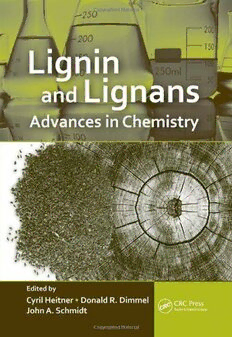
Lignin and Lignans: Advances in Chemistry PDF
636 Pages·2010·20.109 MB·English
Most books are stored in the elastic cloud where traffic is expensive. For this reason, we have a limit on daily download.
Preview Lignin and Lignans: Advances in Chemistry
Description:
Over the past four decades, there has been immense progress in every area of lignin science, ranging from the enzymology of lignin biodegradation, to the delignification of wood fiber during pulping and bleaching, to advances in spectroscopy. Lignin and Lignans: Advances in Chemistry captures the developments that have been achieved by world-class scientists in the most critical aspects of this burgeoning field. Tools for the characterization of lignin and lignans After an overview of the topic, the book discusses the significance and comparative performances of the most commonly used chemical degradation methods and presents lignin structural information based on the use of these methods. Next, the book explores spectroscopic methods, including UV-visible absorption, fluorescence, Raman, infra red (IR), near-infrared (NIR), nuclear magenetic resonance (NMR), and heteronuclear NMR spectroscopy. It then compares the results of studies of lignin in situ with studies of isolated lignins. Predicting reactivity The authors discuss polymer properties related to thermal stability and molecular motion of lignin in the solid state. They describe applications of electronic structure calculations to the chemistry of lignin, and they explore lignin reactions that occur during the chemical pulping of wood by soda, kraft, AQ, and polysulfide processes. Chemistry associated with industrial processes The book describes chemical pulp bleaching, oxidative and reductive lignin-retaining bleaching, and lignin biodegradation. It also examines the application of microorganisms and the enzymes they produce in the manufacturing of chemical and mechanical pulp. The book closes with chapters on photodegradation and chromophore formation and the pharmacological properties of lignans. Highlighting significant developments on selected topics, this essential reference for those in industry and academia is designed to fuel further research and discovery in this specialized area, especially in the emerging field of biorefining.
See more
The list of books you might like
Most books are stored in the elastic cloud where traffic is expensive. For this reason, we have a limit on daily download.
